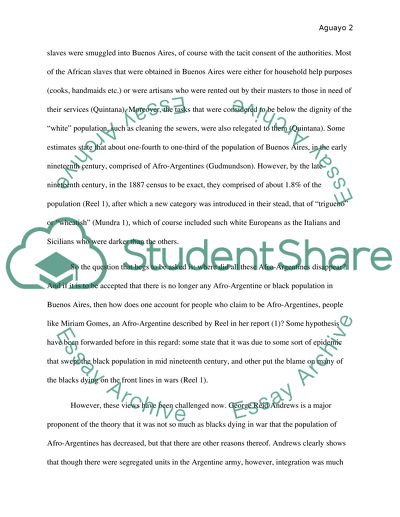Cite this document
(“Afro-Argentineans Essay Example | Topics and Well Written Essays - 1500 words”, n.d.)
Afro-Argentineans Essay Example | Topics and Well Written Essays - 1500 words. Retrieved from https://studentshare.org/miscellaneous/1565559-afro-argentineans
Afro-Argentineans Essay Example | Topics and Well Written Essays - 1500 words. Retrieved from https://studentshare.org/miscellaneous/1565559-afro-argentineans
(Afro-Argentineans Essay Example | Topics and Well Written Essays - 1500 Words)
Afro-Argentineans Essay Example | Topics and Well Written Essays - 1500 Words. https://studentshare.org/miscellaneous/1565559-afro-argentineans.
Afro-Argentineans Essay Example | Topics and Well Written Essays - 1500 Words. https://studentshare.org/miscellaneous/1565559-afro-argentineans.
“Afro-Argentineans Essay Example | Topics and Well Written Essays - 1500 Words”, n.d. https://studentshare.org/miscellaneous/1565559-afro-argentineans.


